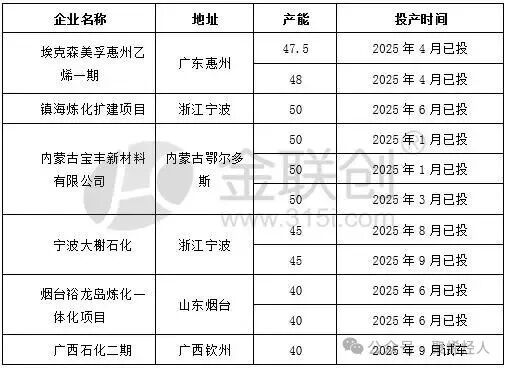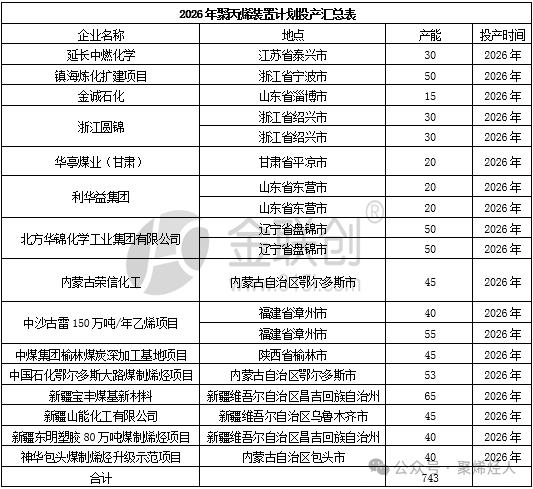PP Production Capacity Again Increases! Approaching 50 Million Tons Per Year!
The 400,000 tons/year polypropylene unit in the Guangxi Petrochemical integrated refining and chemical upgrading project has successfully completed its physical trial run on the first attempt, marking a new milestone in China's polypropylene capacity. According to industry statistics, by October 2025, China's annual polypropylene production capacity is expected to reach 49.04 million tons, approaching the 50 million tons threshold, with a strong momentum of capacity expansion continuing.
List of New Domestic Polypropylene Production Facilities in 2025
Unit: ten thousand tons/year

Polypropylene, as one of the five major general-purpose plastics, is widely used in packaging, home appliances, automobiles, and medical fields. Its capacity growth directly reflects the rapid development of China's petrochemical industry. From a regional distribution perspective, the newly added capacity shows a clear characteristic of regional concentration. By 2026, the country is expected to add 7.43 million tons of polypropylene capacity, mainly concentrated in the northwest, east China, and northeast regions.

The Northwest region, leveraging its abundant coal resources and the cost advantages of coal-based olefins, has become the main area for capacity growth, with an expected increase of 3.53 million tons. The East China region, as the core consumption area and distribution center for the polypropylene industry, is expected to add 1.4 million tons of capacity by 2026. The Northeast region mainly relies on traditional oil-based polypropylene processes, and in recent years, has experienced low capacity utilization rates due to unstable operation of facilities. An additional 1 million tons of capacity is expected by 2026.
While production capacity is racing ahead, hidden concerns in the industry are also accumulating. On one hand, the apparent demand growth is expected to be only around 6% by 2025, far below the production capacity expansion rate of over 10%, which could lead to a supply-demand gap exceeding 7 million tons and intense competition for general-purpose materials. On the other hand, high-end specialized materials still heavily rely on imports, indicating a massive potential for domestic substitution. As the "dual carbon" constraints intensify, the environmental costs of coal chemical routes are rising, while the PDH route must contend with fluctuations in propane prices, significantly amplifying profit elasticity.
【Copyright and Disclaimer】The above information is collected and organized by PlastMatch. The copyright belongs to the original author. This article is reprinted for the purpose of providing more information, and it does not imply that PlastMatch endorses the views expressed in the article or guarantees its accuracy. If there are any errors in the source attribution or if your legitimate rights have been infringed, please contact us, and we will promptly correct or remove the content. If other media, websites, or individuals use the aforementioned content, they must clearly indicate the original source and origin of the work and assume legal responsibility on their own.
Most Popular
-

DuPont plans to sell Nomex and Kevlar brands for $2 billion! Covestro Declares Force Majeure on TDI / oTDA-based / Polyether Polyol; GAC Group Enters UK Market
-

Fire at Sinopec Quanzhou Petrochemical Company: 7 Injured
-

Zf asia-pacific innovation day: Multiple Cutting-Edge Technologies Launch, Leading Intelligent Electric Mobility
-

List Released! Mexico Announces 50% Tariff On 1,371 China Product Categories
-

[International News] European Plastic Recycling Industry on the Verge of Collapse! BASF Plans to Spin Off This Business, Lanxess Faces Pressure in Third Quarter Performance






